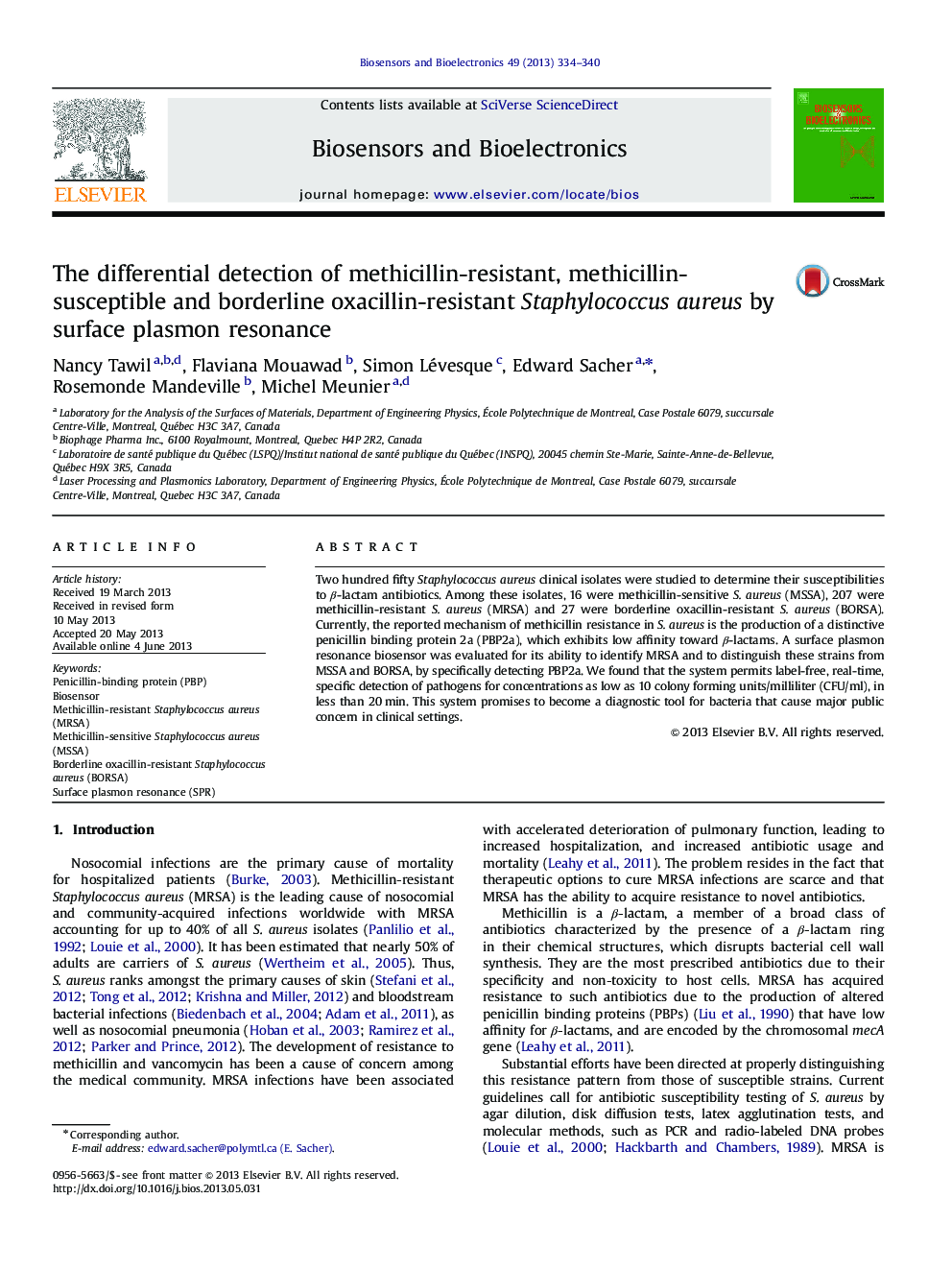| Article ID | Journal | Published Year | Pages | File Type |
|---|---|---|---|---|
| 7233997 | Biosensors and Bioelectronics | 2013 | 7 Pages |
Abstract
Two hundred fifty Staphylococcus aureus clinical isolates were studied to determine their susceptibilities to β-lactam antibiotics. Among these isolates, 16 were methicillin-sensitive S. aureus (MSSA), 207 were methicillin-resistant S. aureus (MRSA) and 27 were borderline oxacillin-resistant S. aureus (BORSA). Currently, the reported mechanism of methicillin resistance in S. aureus is the production of a distinctive penicillin binding protein 2a (PBP2a), which exhibits low affinity toward β-lactams. A surface plasmon resonance biosensor was evaluated for its ability to identify MRSA and to distinguish these strains from MSSA and BORSA, by specifically detecting PBP2a. We found that the system permits label-free, real-time, specific detection of pathogens for concentrations as low as 10 colony forming units/milliliter (CFU/ml), in less than 20 min. This system promises to become a diagnostic tool for bacteria that cause major public concern in clinical settings.
Related Topics
Physical Sciences and Engineering
Chemistry
Analytical Chemistry
Authors
Nancy Tawil, Flaviana Mouawad, Simon Lévesque, Edward Sacher, Rosemonde Mandeville, Michel Meunier,
